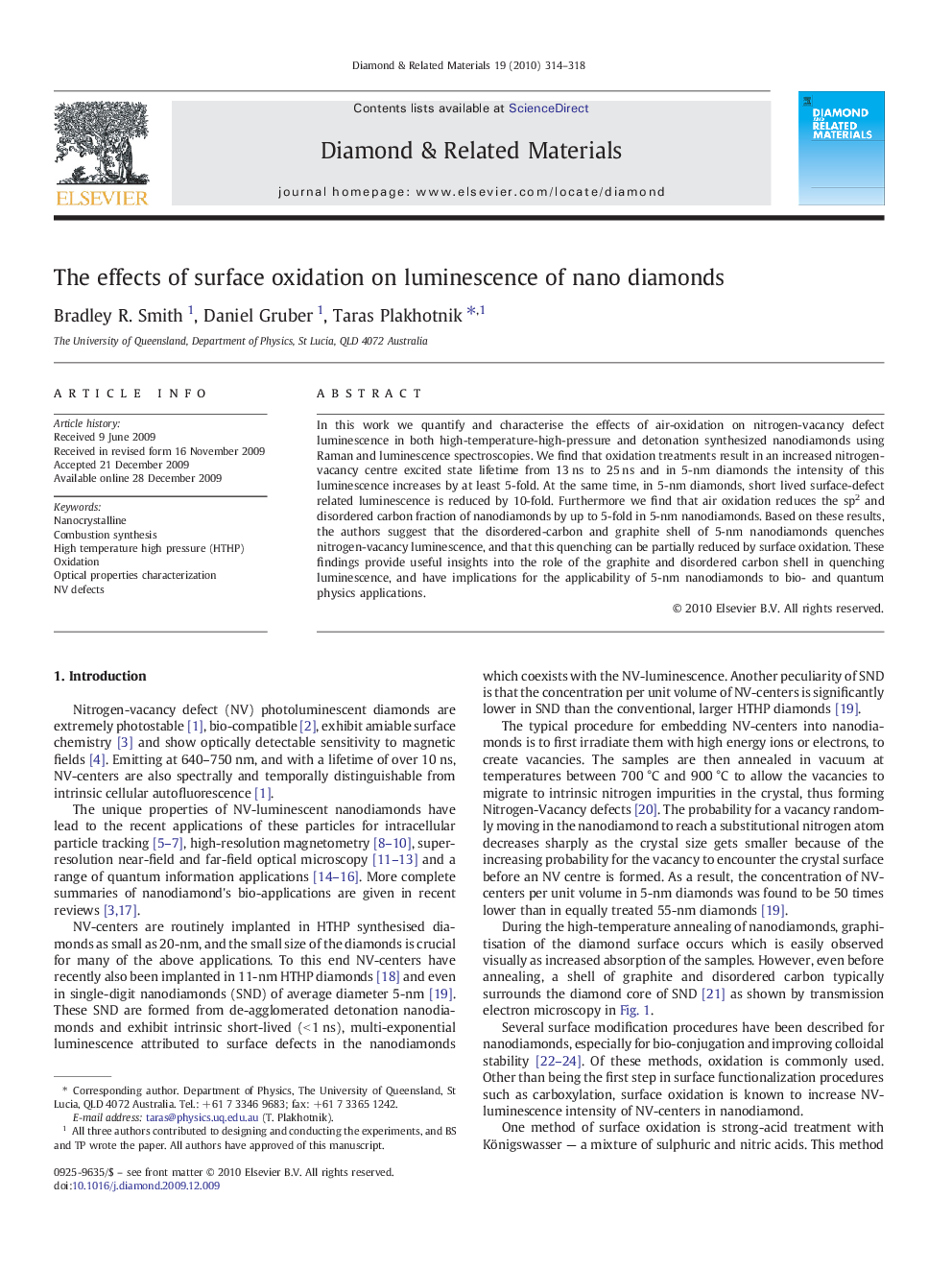| Article ID | Journal | Published Year | Pages | File Type |
|---|---|---|---|---|
| 702137 | Diamond and Related Materials | 2010 | 5 Pages |
In this work we quantify and characterise the effects of air-oxidation on nitrogen-vacancy defect luminescence in both high-temperature-high-pressure and detonation synthesized nanodiamonds using Raman and luminescence spectroscopies. We find that oxidation treatments result in an increased nitrogen-vacancy centre excited state lifetime from 13 ns to 25 ns and in 5-nm diamonds the intensity of this luminescence increases by at least 5-fold. At the same time, in 5-nm diamonds, short lived surface-defect related luminescence is reduced by 10-fold. Furthermore we find that air oxidation reduces the sp2 and disordered carbon fraction of nanodiamonds by up to 5-fold in 5-nm nanodiamonds. Based on these results, the authors suggest that the disordered-carbon and graphite shell of 5-nm nanodiamonds quenches nitrogen-vacancy luminescence, and that this quenching can be partially reduced by surface oxidation. These findings provide useful insights into the role of the graphite and disordered carbon shell in quenching luminescence, and have implications for the applicability of 5-nm nanodiamonds to bio- and quantum physics applications.
